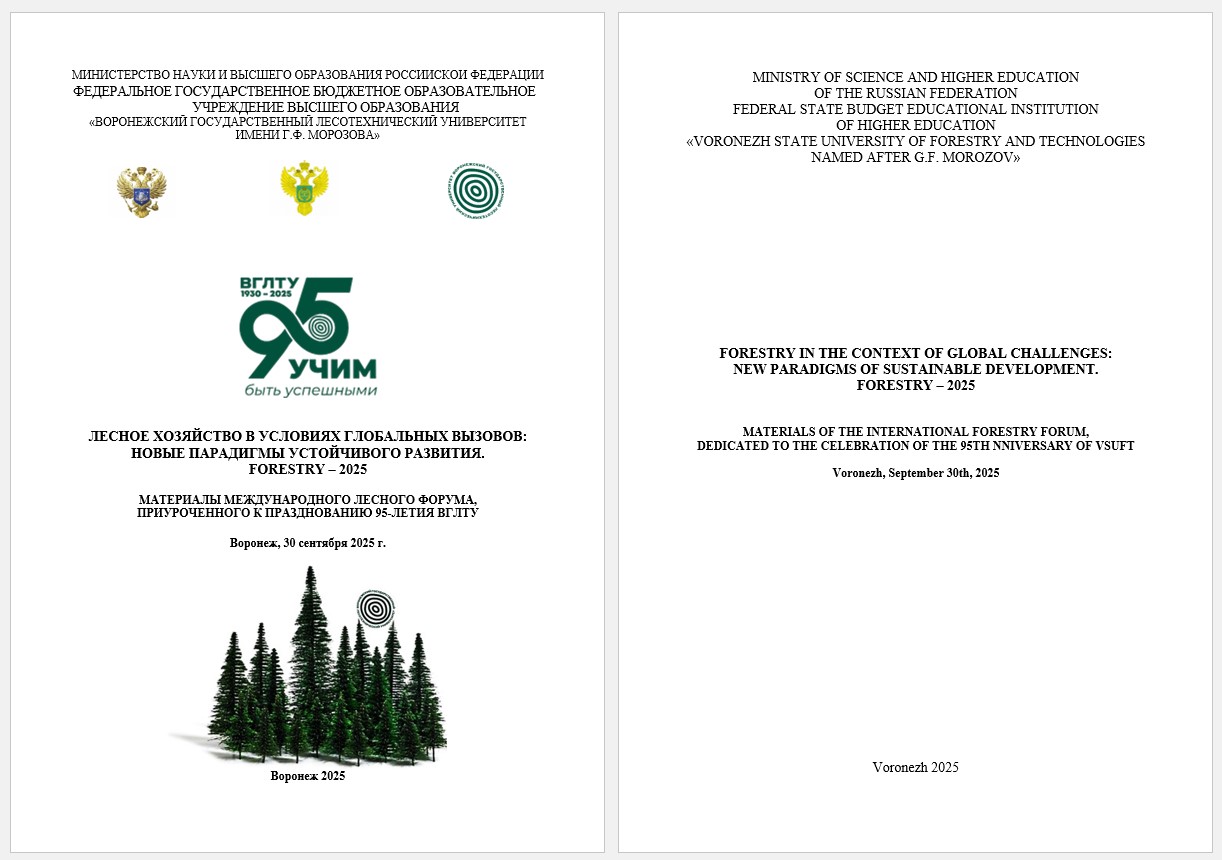from 01.01.2018 to 01.01.2025 Russian Federation
Voronezh, Russian Federation
Voronezh, Voronezh, Russian Federation
UDC 631.53
High-quality planting stock is the foundation of forest plantation production. In this regard, there is a need to improve cultivation technologies aimed at increasing the survival rate, productivity, and resilience of forest stands. The production of containerized planting stock (with a closed root system) in containers made of various materials is a highly effective and promising direction in modern nursery practice, capable of increasing plant survival upon outplanting to up to 100%. The research aim is to identify the patterns for developing a technology for growing containerized planting stock in greenhouses based on clonal micropropagation in vitro. As a result of statistical processing of measurement data, it was found that the in vitro cultivation of the white poplar hybrid on aspen rootstock in cassettes without subsequent transplanting showed the lowest productivity. Transplanting from plug trays into larger pots significantly improved growth performance. The best results were also achieved through hardening off in an open-ground area: plant height exceeded the greenhouse variant by 25.1%. Thus, increasing the volume of the root zone and growing on in open ground are key factors for enhancing the productivity of planting stock.
white poplar × aspen hybrid, clonal micropropagation, in vitro, greenhouse, root-balled system, plug trays, pots, stem, leaf, root
1. Zhigunov, A. V. Teoriya i praktika vyraschivaniya posadochnogo materiala s zakrytoy kornevoy sistemoy / A. V. Zhigunov. – Sankt-Peterburg: SPbNIILH, 2000. – 293 s.
2. Zhigunov, A. V. Proizvodstvo posadochnogo materiala v lesnyh pitomnikah Severo-Zapada Rossii: prakticheskie rekomendacii / A. V. Zhigunov, I. A. Markova. – Sankt-Peterburg : SPbNIILH, 2005. – 120 s.
3. Kachinskiy N.A. Mehanicheskiy i mikroagregatnyy sostav pochvy, metody ego izucheniya. – M.: Izd-vo AN SSSR, 1958. – 192 s.
4. Kolesnikov V.A. Metody izucheniya kornevoy sistemy drevesnyh rasteniy. — 2-e izd., ispr. i dop.. — Moskva : Lesnaya prom-st', 1972. — 152 s. il.; 21.
5. Evlakov P.M., Tsarev A.P., Tsareva R.P., Rzhevsky S.G., Zapletin V. // IOP Conf. Ser.: Earth Environ. Sci. 226 012018.
6. FAO. 2020. Global Forest Resources Assessment 2020 – Key findings. Rome. https://doi.org/10.4060/ca8753en]
7. Fossati T., Development of molecular markers to assess the level of introgression of Populus tremula into P. alba natural populations / T. Fossati, G. Patrignani, I. Zapelli, M. Sabatti, F. Sala, Castiglione S. // Plant Breed. 2004. V. 123. P. 382–385.
8. Hannay J., New study finds global forest area per capita has decreased by over 60 %. URL: https://www.https://ioppublishing.org/news/new-study-finds-global-forest-area-per-capita-has-decreased-by-over-60/.
9. Singh, A. Poplars and willows for increasing the livelihood and rural development: A review / A. Singh, A. Kumar. – in Report on International Poplar Commission 24th Session, Dehradun, Poplars and willows: trees for society and the environment, 29 October-2 November 2012. 155.





